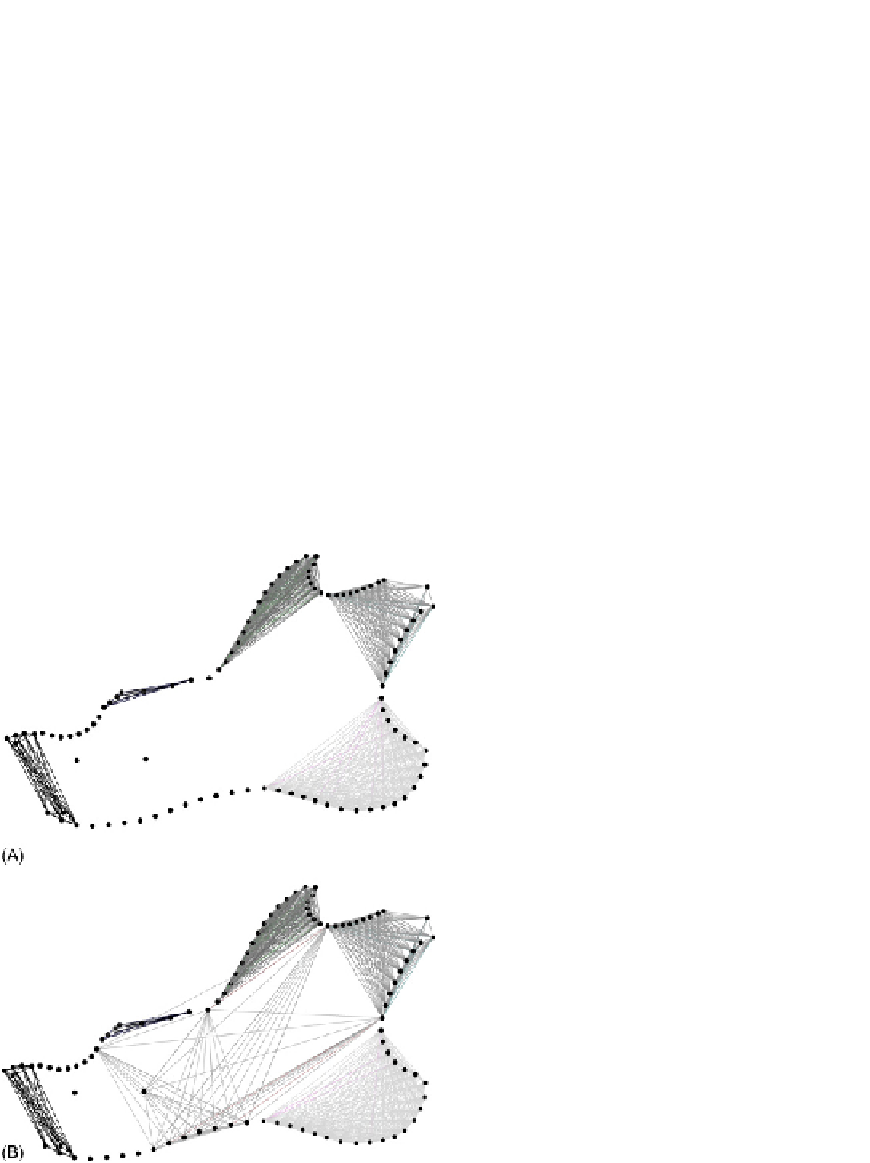Biology Reference
In-Depth Information
between the models appears very small, so it is not clear whether the best is all that much
better than the worst. However, we can evaluate these models against a much larger array
of alternatives by constructing new models by mixing the modules proposed by the
hypotheses into new combinations. When assessed in light of the 792 possible combina-
tions, some of which differ only by the landmarks marking the ramal boundaries, the
Condensation model is not the best of all the models. Instead, it ranks 16th. The next best
fitting of the developmental models, the
Satb2
Gsc model, ranks 203rd and the
Satb2
model ranks 363rd; the Front/Back model ranks 488th.
The best-fitting model of the 792 contains four modules, (
Figure 12.19A
), the small dis-
tal region of the mandibular symphysis, the molar alveolus, and the three proximal pro-
cesses (coronoid, condyloid and angular). For this model,
1
0.3656. It contains four
modules of the Condensation hypothesis, but contrary to that hypothesis (and consistent
with the
Satb2
and
Satb2
γ
*
52
Gsc models), it divides the incisor alveolus into two parts. The
1
next best-fitting model (
γ
*
0.3635) differs from the best by including the horizontal
52
ramus as a module.
Distance-Matrix Method
To examine the integration within modules as well as between, we subdivided each
hypothesized module into two parts, whenever possible, producing 12 partitions (the
FIGURE 12.19
The two best models found by
mixing the modules contained in the four
a priori
mod-
els. (A) Model ranked 1st; (B) model ranked 2nd.


